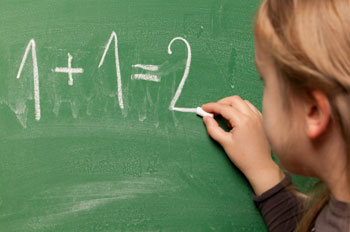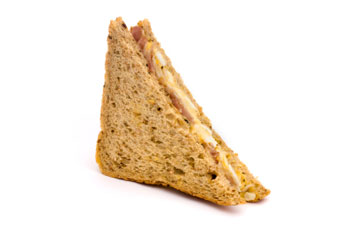5th Grade Geometry: Help for Struggling Students
In 5th grade geometry, students focus on graphing points on the coordinate plane and classifying 2-dimensional shapes. Keep reading for an introduction to both of these skills.

Geometry Skills for 5th Grade
Graphing Coordinate Points
A coordinate plane is constructed from two number lines positioned perpendicularly to one another. The point where they intersect is called the origin. The horizontal number line is called the x-axis and the vertical number line is called the y-axis.
The 2-dimensional space bounded by these axes is the coordinate plane, and each coordinate point on the plane is defined by an ordered pair (x, y). The value of x in the ordered pair tells you where the point is on the coordinate plane relative to the x-axis, and the value of y describes the position of the point relative to the y-axis.
For instance, the ordered pair (2, 5) represents a coordinate point that lines up with the two on the x-axis and the five on the y-axis. Another way to think about ordered pairs is that they are directions to a point from the origin. In the case of (2, 5), you could find it by moving two spaces along the x-axis from the origin and then moving five spaces along the y-axis from that point.
Classifying Shapes
Polygons
The polygon is one of the main classifications for 2-dimensional shapes. Polygons have a finite (countable) number of straight-line sides. While circles and ovals don't fit into this category, most of the other shapes you'll encounter do. Triangles, trapezoids and pentagons are all examples of polygons.
Within the polygon category, there are many smaller groupings. For instance, any polygon that has exactly four sides is a quadrilateral. Lots of polygons, like rhombuses and rectangles, are also quadrilaterals; other polygons, like triangles and hexagons, are not.
Parallelograms
Within the quadrilateral group, there are even more specific classifications for shapes, like trapezoids, which have two parallel sides. There are also parallelograms, which have two sets of congruent, parallel sides.
More classifications can be made within the parallelogram group. For instance, rectangles are parallelograms because they have two sets of congruent, parallel sides, but they're special because they must also have four right angles. As a result, all rectangles are parallelograms, but not all parallelograms are rectangles.
Some other parallelograms fit into the rhombus category. A rhombus has two sets of congruent, parallel sides, just like a parallelogram. However, rhombuses are special because their two sets of sides are congruent to one another. In other words, they have four equal sides.
There's one more very special type of parallelogram that meets the requirements to be a rectangle and a rhombus. The square is a parallelogram that gets its own classification because it has four congruent, parallel sides (like a rhombus) and four right angles (like a rectangle).
Other Articles You May Be Interested In
-
Not Your Father's Algebra As 45 States Look to Math Reform

One plus one will always equal two...but just how students are taught math is going to change. Nearly every state in the country has adopted the Common Core Standards; for math, this means new and more in-depth approaches to teaching the subject. Have we seen the last of traditional algebra and geometry classes?
-
The Pythagorean Theorem: Almost As Easy As ABC

One of the most useful and widely used rules in mathematics is the Pythagorean theorem. Your child's mastery of this theorem is critical to success in geometry. One helpful method for understanding and remembering a rule like the Pythagorean theorem is to fully explore its meaning and history.
We Found 7 Tutors You Might Be Interested In
Huntington Learning

- What Huntington Learning offers:
- Online and in-center tutoring
- One on one tutoring
- Every Huntington tutor is certified and trained extensively on the most effective teaching methods
K12

- What K12 offers:
- Online tutoring
- Has a strong and effective partnership with public and private schools
- AdvancED-accredited corporation meeting the highest standards of educational management
Kaplan Kids

- What Kaplan Kids offers:
- Online tutoring
- Customized learning plans
- Real-Time Progress Reports track your child's progress
Kumon

- What Kumon offers:
- In-center tutoring
- Individualized programs for your child
- Helps your child develop the skills and study habits needed to improve their academic performance
Sylvan Learning

- What Sylvan Learning offers:
- Online and in-center tutoring
- Sylvan tutors are certified teachers who provide personalized instruction
- Regular assessment and progress reports
Tutor Doctor

- What Tutor Doctor offers:
- In-Home tutoring
- One on one attention by the tutor
- Develops personlized programs by working with your child's existing homework
TutorVista

- What TutorVista offers:
- Online tutoring
- Student works one-on-one with a professional tutor
- Using the virtual whiteboard workspace to share problems, solutions and explanations